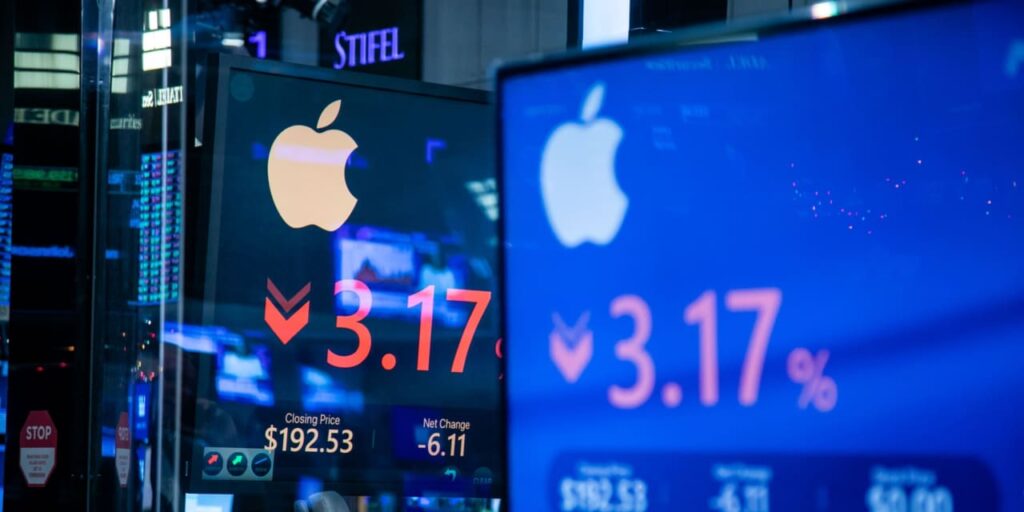Apple
stock registered one of its biggest daily declines in a year as investors took in the latest in a series of downgrades of the tech company.
Strategists at
Barclays,
led by Tim Long, changed their rating to Underweight from Equal Weight, with a price target at $160, roughly 14% below the stock’s current level.
He is one of the few on Wall Street with a downbeat view on Apple. Among 44 analysts who cover the stock, according to
FactSet,
60% have a Buy rating of the equivalent, 30% rate Apple at Hold, and only 10% rate it at as Underweight or Sell.
In the first quarter of 2023, the ratios were 78%, 17%, and 5%, respectively.
Still, downgrades have been piling up. In May, Loop Capital analyst Ananda Baruah cut his rating on the stock to Hold from Buy, followed by D.A. Davidson’s Tom Forte and UBS’ David Vogt in June, and Rosenblatt Securities’ Barton Crockett in August. KeyBanc’s Brandon Nispel joined in October, downgrading Apple to Sector Weight from Overweight.
Apple didn’t immediately respond to a request for comment.
While previous downgrades haven’t moved Apple shares much, Barclays’ move, which signals not just a Hold, but a Sell for the stock, seems to have shaken investors a bit more. The stock was down 4.4% on Tuesday, in line for a decline that ranks behind only the 4.8% dive on Aug. 4, when Apple posted disappointing June-quarter results.
Softness in both sales of iPhones and services revenue from the App Store, Apple Music, and Apple TV+ are the main concerns analysts have cited. Apple’s latest big new product—an augmented-reality headset called Vision Pro—isn’t expected to bring in much new revenue due to its high price.
Simply put, there isn’t much growth to be excited about, especially given Apple stock’s current high valuation. The stock rallied nearly 50% in 2023, leaving it trading at 28 times the per-share earnings expected for the coming year—even as its sales declined from a year earlier for four consecutive quarters.
“The continued period of weak results coupled with multiple expansion is not sustainable,” Long wrote in the Tuesday note.
There is also the long-term risk from the Department of Justice’s antitrust case against Google over the firm’s multibillion-dollar payments to Apple to make it the default search engine on iPhones and in the Safari browser. If the court ruling puts a stop to that relationship, it could bring down Apple’s revenue significantly.
Apple’s rally in 2023 was partially driven by excitement over its potential gains from generative artificial intelligence. The addition of AI-related features could push more customers to upgrade their devices, while the rapid adoption of AI could lead to a wave of new applications in the App Store. Apple would get a cut of the revenue that is generated.
But so far, Apple hasn’t said much about its strategies for generative AI and large language models, even as the rest of tech has gone all in. Its voice assistant Siri, for example, now faces strong competition from the latest Google Assistant, which has already incorporated Bard, Google’s generative AI chatbot.
As my colleague Eric Savitz wrote in October, “Apple hasn’t lost the AI market, at least not yet. But it needs to get moving.”
Apple is set to report its December-quarter earnings in a few weeks. That will give investors a peek at its holiday sales following the the release of the iPhone 15 in late September. Analysts are expecting $118 billion in sales, a 0.8% uptick from last year.
If they are right, it would be Apple’s first year-over-year growth since the September quarter of 2022. That could generate some renewed optimism about the stock.
Write to Evie Liu at [email protected]
Read the full article here













